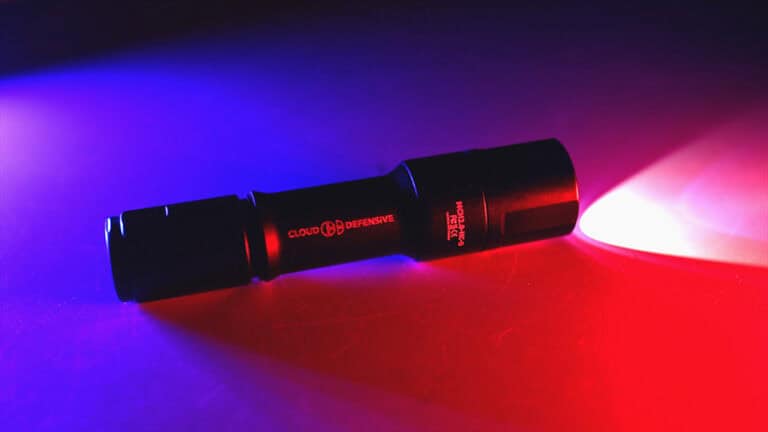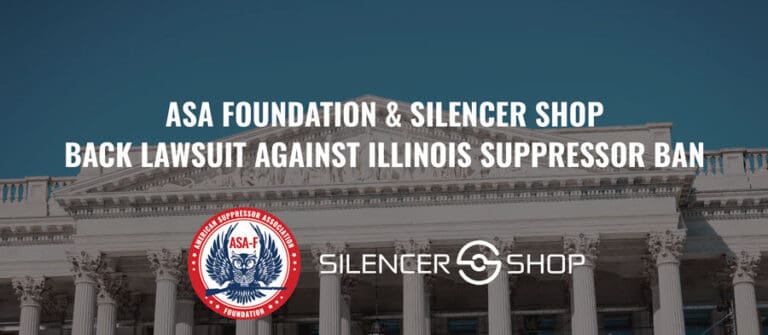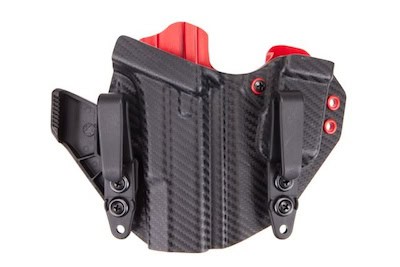PASSION APO Spotting Scope—Compact Power & Exceptional Clarity
German Precision Optics’ Passion APO is a high-performance compact spotting scope designed and…
German Precision Optics’ Passion APO is a high-performance compact spotting scope designed and…
Mesa Tactical, well-known for its pro-grade tactical shotgun accessories, now bridges the gap…
North Kansas City’s TriStar Arms has introduced the APOC, a compact 4-inch-barrel, 9mm…
The Mod-Navy Qual I’ve been doing this qual (or drill, or whatever the current nom…
• Built for road trips and off-road use• Manual transmission equipped• Wrapped in MultiCam Arctic…
I designed the Button Man to give shooters a low-round-count, low-light-engagement drill that involved both…
A few years ago, I was working as an undercover officer with a few other UCs for a pro-act unit. Our mission over the course of a few weeks was to pose as street level narcotics buyers in a high-narcotics area controlled by a couple local street gangs. Instead of traditional buy-bust operation; an operation where dealers were immediately arrested by arrest teams after a single sale, we engaged in “buy-and-slides,” where successful sales were completed, and the dealers were allowed to continue to sell, effectively stacking cases on the most prolific dealers that were eventually identified, arrested and/or flipped to work up the food chain. Pretty typical stuff.
On one day in particular, one of the UCs on my team completed a sale and during the hasty debrief, s/he said, “Guys, be careful. I got patted down for weapons and wires before they’d sell to me.” Despite what we want to believe, criminals aren’t dumb. Even street-level thugs have finely-honed survival instincts, and any UC knows that they are literally swimming with sharks when we undertake undercover operations. This is their world…we’re just operating in it.
Getting called out, exposed, and caught while in-role is every UC officer’s worst nightmare. Deception, trusting instincts, and being suspicious of everyone is a skill that UC officers develop over time. For criminals, it’s a way of life, and it is naïve and dangerous to assume that just because we’re well trained, we’re smarter or better than those we’re trying to arrest.
Arrogance can get you hurt or killed.
True to the previous UC’s experience, I was scoped out on my next run, but due to the way I carry certain equipment, I was not made out nor exposed.
Flash forward a year or so, and my responsibilities at work changed and I was in a plainclothes capacity, not so much as a UC, but in a surveillance role. My carry methods and needs changed, and therefore my equipment needs changed as well. Effective concealment remained a top priority, however now that I was sitting in vehicles or on observation points for extended periods of time, how I carried and deployed my equipment, and how much equipment I carried, were all factors to take into consideration.
My temporary work assignment coincided with SHOT Show 2016, and I stopped by the TNVC/Unity Tactical Booth to talk with Trent Zimmer from Unity Tactical. While there, Trent showed me a soon-to-be-released piece of equipment dubbed the CLUTCH, which immediately intrigued me.
The CLUTCH is a low profile concealable belt, and a multi-purpose, extraordinarily adaptable equipment platform. Fabricated from a 2-way stretch material, the CLUTCH is comprised of a very sturdy low profile Velcro front enclosure, and several “cells” or pockets in which to stow mission-critical equipment. The front Velcro enclosure is a clever design. Generous patches of hook and loop fasten together, but there is an additional contoured retention flap that secures over the first two which conceals the edges and prevents the front of the belt from printing against outer garments when the belt is stretched under tension. The front Velcro enclosure flap also contains a small admin pouch perfect for stowing a couple credits cards, a badge, or credentials.
The CLUTCH cell pockets lay completely flat when not in use, keeping the belt system very low-profile. The back of each cell has a field of Velcro sewn to it, and are designed to universally accept most kydex inserts on the market. The end user can then simply affix another piece of Velcro to their desired accessory insert and mount it inside of the cell. The Velcro keeps the accessory insert in place, and the stretch properties of the two-way fabric keeps constant tension on the insert for additional stability. The 3 and 9 o’clock cells have Velcro openings at the bottom, allowing a larger frame pistol muzzle to protrude though the cell bottom, so the end user can adjust for customizable ride height depending on situational needs.
The 6 o’clock pocket does not have a Velcro field and contains a scalable length of shock cord to adjust the length of the belt, much like the adjustable cummerbund on a plate carrier. This pocket makes for a good hasty stow pouch for gloves, QuikClot, or an Israeli Bandage.
The interior of the belt is equally well-thought out. The back of each cell has a non-skid field sewn to it to assist keep the belt in place, and each field has pass-through slots so the end user can really lock the CLUTCH down in place using belt keepers if so desired.
The CLUTCH looks, and seems, well thought out, so how does it work in real life?
Very, very well.
When I first took possession of the CLUTCH a couple years ago, I immediately thought about its uses in a low-viz environment, as that is what I would use the CLUTCH for in real life. I am a really small guy; 5’3”/150, so concealment is always a factor for me for on and off duty life.
For undercover/plainclothes purposes, the CLUTCH does very well. If I’m in an undercover role, street-level narcotics buys and things of that nature, I don’t like to have a ton of stuff on me (remember my story form the beginning of the article), so I really ran the CLUTCH as minimalist as possible, carrying only a G26, 2 spare G19 mags, a small flashlight, and a CAT tourniquet.
Thanks to Chris Woomer from Veil Solutions, I had holster inserts for a G26 and G19, as well as a double mag pouch. I wanted to simulate appendix carry, so I mounted my left-handed G26 holster in the 11 o’clock position, the TQ in the 9 o’clock pouch, the two spare mags at 1 o’clock, and tucked the small flashlight into the 3 o’clock. With this minimal set-up, I had all the essentials minus a knife (which could easily have been tucked in-between the Velcro enclosure flaps had I wanted to). All of this under an appropriately-sized T-shirt and I was ready to go.
I mentioned earlier that the pockets lie flat when not in use, and this is very useful while plainclothes. We’ve all heard the old adage about dressing around the gun, but we can’t always wear an exterior button-up shirt, a vest, a jacket, etc. Cops and CCWers alike have to not only dress around their equipment, but modify their body posturing and positioning. Carrying at 3 or 9 o’clock for some folks (the skinny ones like me), can be difficult, as the butt of the pistol will jut out and print against clothing if the wearer leans over more than a few degrees. It’s even worse if one carries behind-the-hip.
Leaning over becomes a no-no, and we’ve all learned to squat down to pick objects up off the floor. Appendix carry therefore becomes an attractive option for concealed carry/deep carry. Not only is the pistol more centerline and easy to naturally access, but the user can also lean forward without the risk of the butt of their pistol protruding through a shirt.
Another great benefit of the CLUTCH is that since it doesn’t rely on belted pants, the users’ wardrobe has now been freed up. I spent several weeks using the CLUTCH and would often head to the gym on the weekends with the aforementioned load-out in gym shorts and a hooded sweatshirt, and no one was the wiser. This added level of adaptability, really adds value to the CLUTCH in non-permissive environments.
I also experimented around a bit with ride height of the system. Typically, I wore the CLUTCH directly over my hips, which works very well for the skinny guys. Higher, however, based on the contours of my body, I found that the higher I wore the CLUTCH (above the waistline) the further the butt of the pistol would jut out which carrying it in the 11 o’clock (lefty) position. To address this issue, I found that carrying at the 9 o’clock, more like the classic shoulder-holster carry) reduced printing issues. This could prove useful when I’m asked to lift my shirt to show that I’m not carrying a hidden weapon on my waistband.
The CLUTCH is also very comfortable and can be worn for prolonged periods of time. Anyone who has sat in a car for hours on end knows that having a pistol in the small of their back, on their hip, or carrying appendix gets tiresome and uncomfortable after a while. The CLUTCH keeps all mission-essential gear in place without adding strain or hotspots to the hips, and alleviates the feeling of a pistol barrel digging into one’s hip crease for the AIWB guys.
[ngg_images source=”galleries” container_ids=”72″ display_type=”photocrati-nextgen_basic_thumbnails” override_thumbnail_settings=”0″ thumbnail_width=”240″ thumbnail_height=”160″ thumbnail_crop=”1″ images_per_page=”20″ number_of_columns=”0″ ajax_pagination=”0″ show_all_in_lightbox=”0″ use_imagebrowser_effect=”0″ show_slideshow_link=”1″ slideshow_link_text=”[Show slideshow]” order_by=”sortorder” order_direction=”ASC” returns=”included” maximum_entity_count=”500″]
The CLUTCH can also be used as an overt system for training classes and courses. The CLUTCH has ample pockets; 6 velcro-enhanced cells, a flat admin pouch within the front Velcro enclosure, and a non-Velcro pouch at 6 o’clock that retain the adjustable shock cords. Fully loaded, it would be feasible to be able to carry a pistol, mini-IFAK or a TQ, gloves, 2 rifle mags, and 2 pistol mags, and a portable radio on a CLUTCH. That’s a respectable loadout for a system that can be donned in seconds.
Additionally, due to the pass-throughs and beltkeeper-capabilities, the CLUTCH really could be used as a full war belt, providing enough gear to sustain a user for a couple reloads for a primary and secondary weapon.
The CLUTCH also fills a niche for first responder situations. Uniformed officers usually have their basic loadout covered. In the event of an active shooter, man-with-a-rifle call, or shots fired calls, an individual officer (if given the opportunity to pre-plan before arrival on a call) can get to their trunk, throw on plates and a helmet, sling on a go-bag or dropleg accessory with extra kit, grab the long gun and go.
Plainclothes guys and detectives don’t always have easy access to additional hardware, but if it’s time to earn a paycheck, it’s time to earn a paycheck. For plainclothes officers or detectives, an officer in a suit responding from a court hearing, a surveillance officer sitting in an unmarked car for hours on end, the CLUTCH is an excellent option.
On any given day, I typically will carry a G26 AIWB, a reload, a flashlight, and a set of cuffs which will suit my needs based on my current assignment. It isn’t however, what I’d prefer to have with me for a prolonged gunfight, or a situation where immediate response is necessary that requited more than the minimal equipment I usually carry.
A loaded-out CLUTCH can easily fit in a messenger bag or a full-sized backpack, staged in the backseat of a car, or secured in a trunk. Fortunately, due to the design of the CLUTCH and user-supplied kydex inserts, the gear that is placed into the CLUTCH stays in place. If a must-respond situation were to arise and all I was wearing was my minimalist gear, I could quickly grab the CLUTCH without worrying that the inserted gear would fly loose, and don it OVER my current equipment; immediately lending me much more in the way or reloads for a primary (rifle in trunk) and secondary, as well as a dedicated spot for my radio, IFAK, and other immediate needs equipment.
All-in-all, the CLUTCH is a winner. It should be noted that the CLUTCH is not a substitute for a deep concealment system such as “Thunderwear” or “Smartcarry.” The CLUTCH, while extremely discrete, will not survive anything more than a casual patdown, and in my assessment, should be employed more for the close-cover and surveillance guys; end users should be certain of their application before buying the CLUTCH system.
The CLUTCH surprised me in a couple different realms, as well; comfort, and stability. The CLUTCH, regardless of its use and configuration is actually quite comfortable to wear whether it be above or on the beltline, alone, or in conjunction with IWB accessories. The CLUTCH also appears quite stable under normal, upright use; however I haven’t tried running it hard over/under vehicles, or for prolonged up/downs into Urban Prone yet. As always, I’ll circle back around if issues arise after a few more months of use.
The only downside to the CLUTCH for me at the moment is the price, coming in at $136 retail. Unity Tactical is meticulous with their quality assurance, and all of their gear is innovative and top-notch, so users should expect a price commensurate with quality. Just keep in mind, the end-user will have to provide their own kydex inserts as well, but most popular on-hand accessories such as Bladetech, ITW FastMags, etc. will fit the cells.
Due to its versatility, the CLUTCH should appeal to law enforcement, government agencies, motorcycle riders, and anyone who takes non-traditional carry seriously. The initial price, while substantial, costs less than a lot of other dedicated war belts, and is arguably much more adaptable.
Want to more about Unity Tactical?
Check them out on the web: www.unitytactical.com
On Facebook
On Instagram



Chris Tran is a police officer for a large municipality in the Pacific Northwest. He writes equipment reviews aimed towards the everyday user with a focus on functionality, durability, and cost effectiveness.
[dcs_img_right framed=”black” w=”250″ h=”85″] http://gunsandtactics.wpengine.com/wp-content/uploads/2012/08/gat.jpg [/dcs_img_right] Seattle, WA – Guns & Tactics, a video production and social media company specializing in services for firearms, shooting sports and tactical…

GALLS, LLC® and ONE Lexington recently announced they’re partnering up for the “Be the Change” scholarship competition.

Cloud Defensive MCH & REIN 2.0: We go over our first impressions, the specs, what’s in the box and some up close details.

ILLINOIS’ BAN ON SUPPRESSORS IS ON BORROWED TIME

Get in on the Winter Flash Sale going on right now at Beyond Clothing. Each deal is for 48 hours so act fast.

In today’s video we are checking out LAS concealment’s holsters. Tons of kydex on the market today, how does LAS stand up? Check it out.
© 2025 UN12 Magazine
© 2025 UN12 Magazine
Wait! Don’t forget to